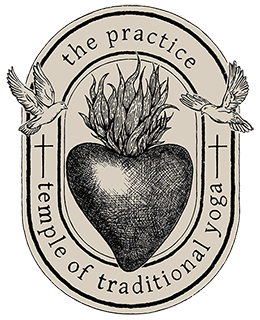By Ami Effendy.
The breath is the thing closest to us. It is tangible, believable, understandable and controllable. The gentle inhalation and exhalations sustains us, calms us, affects our thoughts and is itself affected by our activities, emotions and thoughts.
We have all had times where we have felt upset, our breathing quickens, we take shallow breaths, feel panicked and light headed. People’s advice is always to “take some deep breaths”, and they are right! Breathing deeply, inhaling slowly, filling your mind and body with oxygen calms us down, both physically but also mentally, and exhaling release tension and CO2 out of the system and body.

It might sound funny, but in world today, we often forget to breathe. Not just the type of breathing that we do automatically (and keeps us alive), but the deep, belly breaths that fill our lungs completely.
Plenty of common habits lead to shallow breathing, which can lead to feelings of stress and anxiety. Having an unconscious lifestyle – all of that results in us not using our lungs to their full potential. Most of the time, we don’t even notice we’re breathing shallowly.
Breathing brings us energy. We need to breathe to send oxygen into the cells in our body, which constantly need a new supply so they can produce energy. When breathing, we also allow our bodies to get rid of the waste products and toxins it creates, which can easily stagnate in our bodies and damage vital functions if not expelled.
Breathing is a curious process, unlike any other in the human body. We do this unconsciously for a large proportion of the time much like the blood flowing around our body, but at any given moment we can choose to change its rhythm.
In the Yoga world, the practice of Pranayama, we become deeply familiar with the breath. A good knowledge of the respiratory system will, therefore, aid and enhance the practices, and help in a better understanding of their physiological parameters.
The classical yogic practices of Pranayama have been known in India for over 4,000 years. The science of pranayama was developed by highly evolved yogis through an intuitive and experiential understanding of prana (vital force – a force in constant motion. Prana exists in sentient beings as the energy that drives every action, voluntary and involuntary, every thought, every level of the mind and body) and its influence on the human mechanism at various levels. Scientific research describes prana as a complex multidimentional energy: a combination of electrical, magnetic, electromagnetic, photonic, ocular, thermal and mental energies.
The breath being the medium of pranayama, the system is based on the three stages of respiration: inhalation (pooraka), retention (kumbaka), and exhalation (rechaka). By permuting and directing these three stages, the different practices of pranayama are obtained.
Technically speaking, pranayama is actually only retention. Yoga Sutra 2:49 state – Pranayama is the pause in the movement of inhalation and exhalation when that is secured.
There are several types of breathing but the majority of people breathe into their chest rather than their stomach. Throughout our lives we will have all experienced changes in our breathing patterns when processing different feelings, for example those of fear, anger, sorrow or physical exercise. Some of us sometimes unintentionally set up physical responses in our breathing when reacting to emotional triggers, for example when we see a rat!
Oxygen feeds your mind after all, and if you are not giving your brain enough oxygen, then it cannot cope sufficiently with your emotions.
We have all had times where we have felt upset, our breathing quickens, we take shallow breaths, feel panicked and light-headed. People’s advice is always to “take some deep breaths”, and they are right! Breathing deeply, inhaling slowly, filling your mind and body with oxygen calms us down, both physically but also mentally.
How Can I Breathe More Effectively?
A lot of you won’t know that most of us only use around a third of our actual breathing capacity.
There are three main compartments to the lungs and for the most part we take shallow breaths that only involve the upper lobes (the top part of our lungs).
Try this:
Find a quiet place and sit comfortable cross legged or kneeling so you can feel and experience your whole spine long and elongate. This way you will be able to feel the movement of the breaths more freely. You can do it as a standalone pranayama or preparation for meditation.
MUKHA BHASTRIKA – known as the cleansing breath
Function – To clear the lungs of stale air. It can be used before any class, as preparation practice.
How – Done from kneeling, sitting or standing, inhale fully and then as you fold forward blast the breath through the mouth in one rapid “whoosh” followed by a series of short cough – like spurts by forceful movement of the diaphragm.
MAHAT YOGA PRANAYAMA – Three Part breathing
Function – Complete deep breathing using three sections of the lungs (lower – mid and upper) to form one complete wave like breath. Promotes immunity, increase vitality and longevity. Healing and grounding. Increase the breathing functions and lungs capacity.
How – Both inhalation and exhalation through the nostrils are initiated from the bottom up.
The abdomen is pushed out as the diaphragm is lowered to pull air into the bottom of the lungs; then the rib cage is expanded out to the sides to fill the mid-lungs and finally the whole chest is raised to pull the air into the top lobes.
Exhalation follows the same sequence; the diaphragm is raised, and abdomen drawn in to expel the air out of the bottom lobes. Ribs are then pulled in towards the centre, forcing the air up and out and finally the chest is dropped down, forcing the last of the air out of the top lobes.
Begin to count your breath to internal 6 counts (divide it in to 3 different part of the lungs), meaning 2 second at each section on both inhalation (2-2-2) and exhalation (2-2-2). After about 5 minutes of this, you can move to the next one..,
SAVITRI PRANAYAMA
Function – Another name for this pranayama is Gayatri which considered to be the most sacred ‘meter’ for chanting Mantra. There is no other breath that offers such supreme balance to the nervous system and mind.
How – After the balance breath through MAHAT YOGA PRANAYAMA, begin to lengthen both the inhalation and exhalation to an internal 8 counts.
After becoming established, begin to hold the breath in for 4 counts at the top of the inhalation and at the end of the exhalations.
The complete practice will be:
Inhale for 8 counts, hold the breath in for 4 counts, exhale for 8 counts, hold the breath out for 4 counts
8:4:8:4
Continue to practice Savitri for 27 rounds which will take between 12 – 15 minutes.
Once you master this breathing technique, it will help you to build more awareness and instantly feel how the breaths is able to nourish your mind and nervous system, create more healthy breathing patterns.
Love,
Ami
